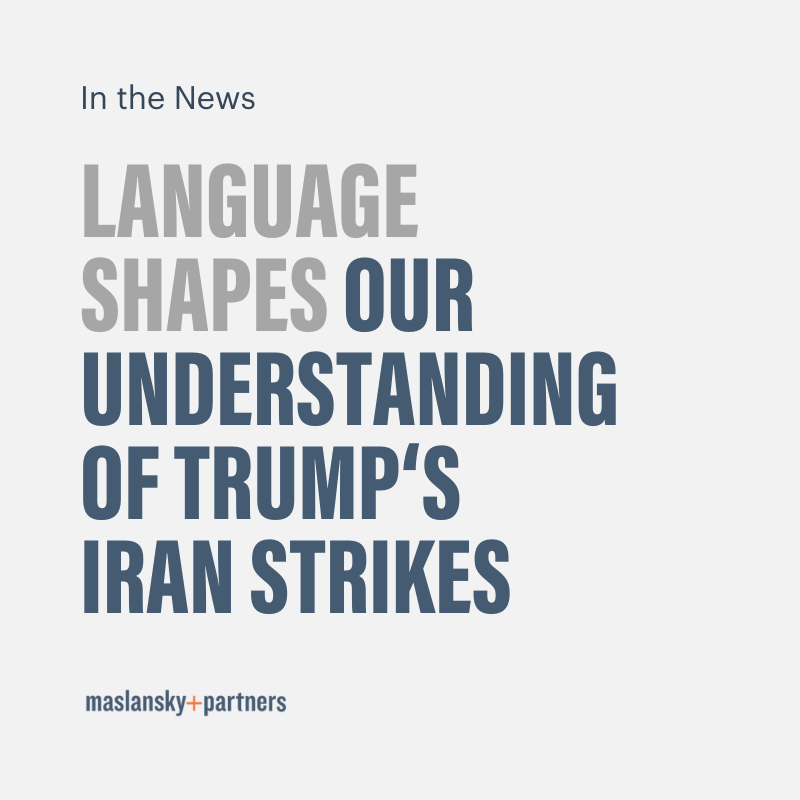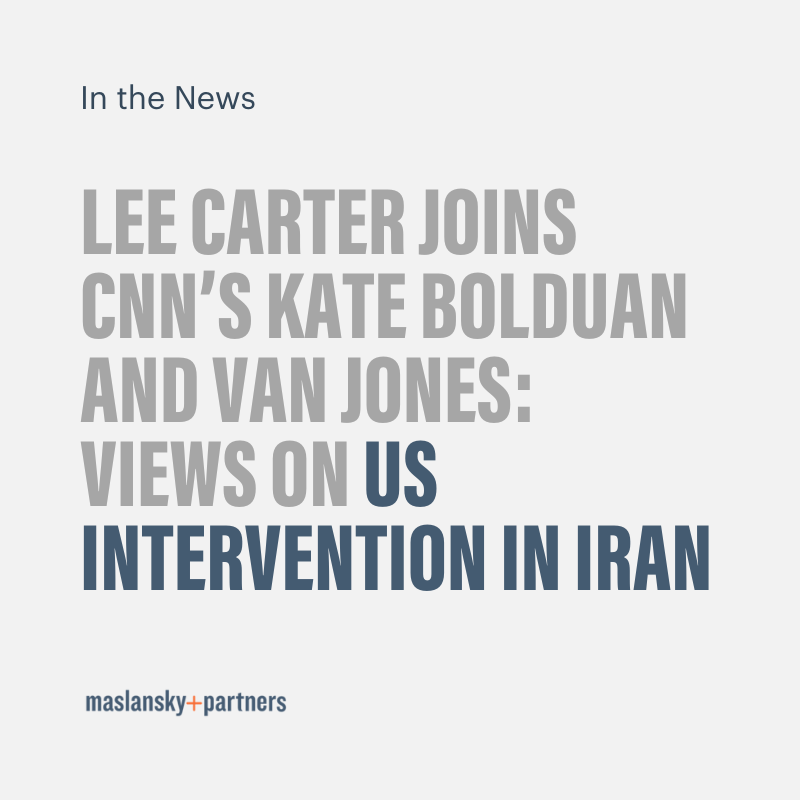So what is Language Strategy? It’s Not What You Say, It’s What They Hear.

maslansky + partners

Lee Carter
President maslansky + partners
We communicate every day. We talk with our colleagues, our employees, our clients, and our stakeholders. Each time we open our mouth, we’re making a choice about what language to use. Which can give us a false conviction that, because we know how to use language to get our needs met in everyday life, we can do the same in business. Too often, however, companies talk about what they want to be known for, or what excites them most about their offering. They don’t explore how that message will be received – whether that message reflects what their target audience thinks about them, and what their target audience is most excited about. In short, if their audience will, in fact, hear what they’re trying to say.
Language strategy is the ability to find precisely the right words to change behavior and craft them into a plan, so that you can drive customers into action. More than just messaging, language strategy is how we connect what we want to achieve with the most effective tactic to achieve it: our language. Language strategy is rooted in the science of how people think – their biases, beliefs, assumptions, and emotions – because we must understand our audience before we can hope to persuade them. And today it’s essential. Whether you are vying for shelf space in your audience’s mind internally for ESG or DE&I issues, or externally as, if you use language without a strategy, you’re likely to get yourself into trouble. Or perhaps worse, be ignored.
This is as true for small companies trying to break into a marketplace as it is for established brands expanding into a new category. A few years ago, Starbucks had found a way to make an instant coffee that tasted as good as their café offerings, and they were excited about launching it nationwide. But when we went into research, we found that despite Starbucks’ enthusiasm for their new product, instant coffee had an incredibly negative reputation. So, the messaging of, “instant coffee from Starbucks!” was hitting consumers like, “orthopedic shoes from Jimmy Choo!” Yes, they liked the brand, but they didn’t want the product. We realized that until we tackled that bias and met the consumer where they were, all the messaging would fall flat.
Our challenge became: how do you make people open to the idea that this coffee, made at their desk, is as good as their store-bought cup of Starbucks? Well, if that was the strategy, the language could follow closely behind. Instead of talking about this product as instant coffee from Starbucks, we talked about it as Starbucks coffee—in an instant. And just by reordering the language, we got a very different reaction. People could focus on their positive association with Starbucks coffee as opposed to their negative association with the category—instant coffee. The launch became one of the most successful in consumer package goods history. A simple strategic shift in the order of our language based on an insight into the consumer mindset changed the entire outcome.
When it comes to selling new products, consumers often have a heightened skepticism of the unproven or unfamiliar. For these consumers, anything vague in a selling proposition will be interpreted negatively. And the key to selling is often to focus on lowering the skepticism rather than trying to be overly promissory about the product. Nowhere have we found this to be more true than in financial services. Outside the meme stock traders and cryptopreneurs, most affluent investors shy away from the unknown or untrusted. In study after study, we found that when asked if they were interested in investing in a new product, consideration lagged expectations.
When asked why, we learned that the reason often was not because the product was not attractive.
It turns out that when consumers were asked if they wanted to invest in a new type of investment, what they heard is that they were being asked to invest their entire portfolio and put all of their money into the product. This made them anxious and avoidant. The solution? Simply by asking if they would be interested in investing “a portion” of their portfolio in the product, consideration increased by about 20 percentage points on average. This simple phrase removed the negative interpretation and lowered the skepticism. If you change the articulation, if you change the word order, if you change the words themselves, you can get an extremely different reaction.
Truly one word can make the difference between a message that changes the conversation and one that falls flat. Recently the casino lobby in New York state ran a campaign about the need for more casinos in New York City, something most New Yorkers are not excited about. They couldn’t just run an ad featuring the fun and glamour of casinos because that wouldn’t meet their audience where they were. They had resistance to overcome. Savvily, their ad said, “What New York really needs: casinos.” And then on the next line it said, “Huh?” One word changed the entire impact. By making their target audience—skeptics—feel heard with that “Huh?” they were then able to get them to a place where they might be receptive to the ad’s message: did you know that casinos in the city would generate a tremendous amount of tax revenue for education? By leading with empathy for the skeptics, they were able to get their message across.
It’s human nature to want to talk about what matters to us, because that’s what we assume matters to everybody. But communicating effectively means talking about what matters to your audience. To find that, you must look at all the different ways that you can articulate the same idea to uncover how people hear what you want them to hear, do what you want them to do, and feel the way you want them to feel.
And that’s what Language Strategy is all about.







